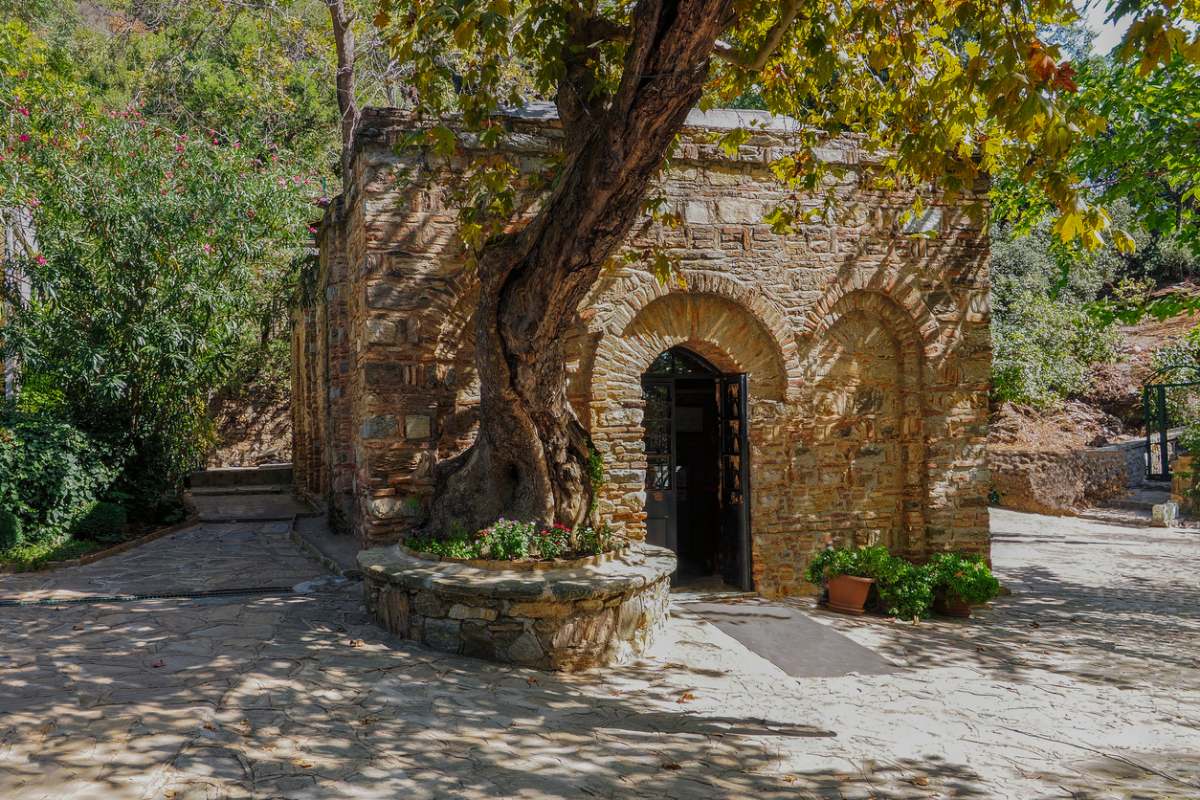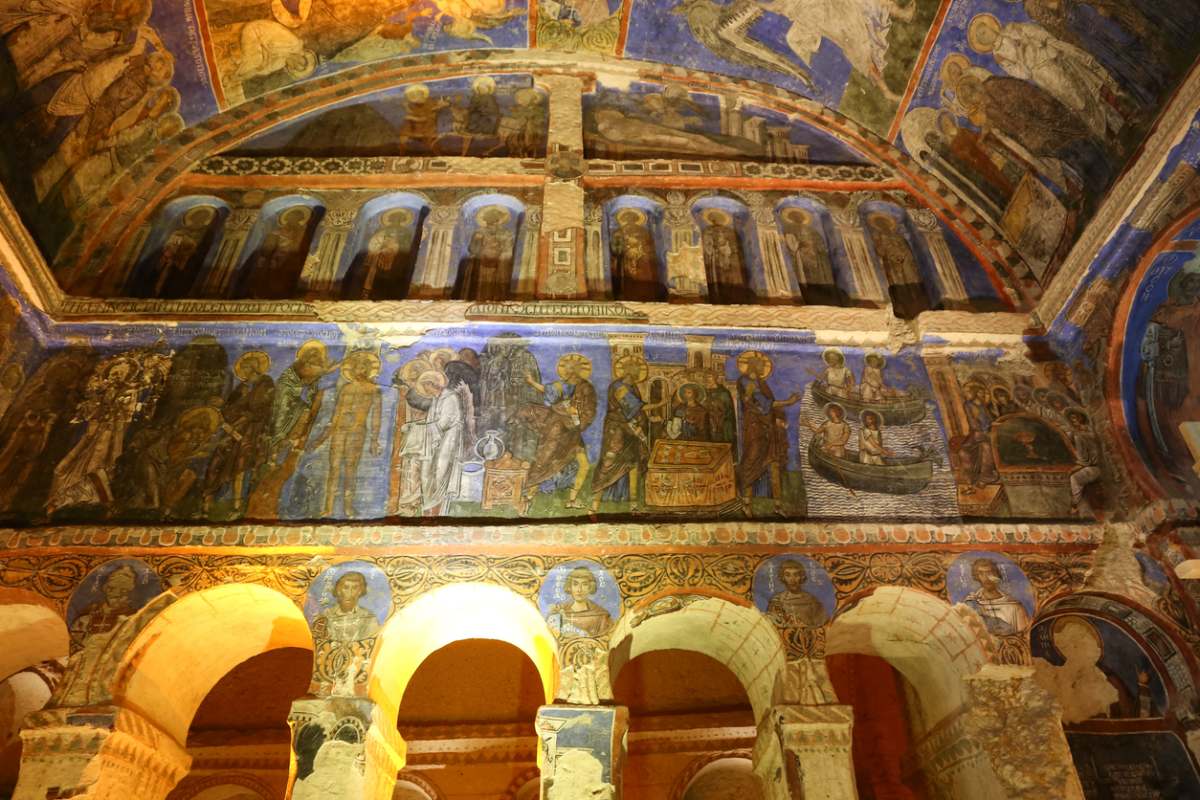Christianity in Turkey, as of today, is not a significant religion in quantitative terms: it is estimated that less than 2% of the population of Turkey is Christian. less than 2% of the population professes any of the branches of this religion.
However, the territory of present-day Turkey does have a special value for the whole of Christianity for Christianity as a whole, especially because of its relationship to places mentioned in the biblical narrative, both in the Old Testament and the New Testament.
The Christians of Turkey are followers of different branches of this religion, distributed mainly by several strategic points of the country.
The most notable with the Greek Orthodox, the Armenian and the Catholic.
The community of Greek Orthodox is very important, even though they greatly reduced their numbers following the ‘exchange of populations’ that occurred after the end of the Greco-Turkish war (1919-1922).
In any case, they are mainly organized around the Orthodox Church of Constantinople (based in Istanbul), one of the four autocephalous of this branch, and its character is full of symbolism, since it is a link with the Byzantine empire. link with the Byzantine EmpireThe Byzantine Empire, in which this branch of Christianity was professed, with its capital in this city that has been, successively, Constantinople, Byzantium and then Istanbul.
The Armenian population population is also Christian, professing the Armenian branch of Gregorian Armenian Christianity..
El número de fieles es reducido y se concentra en buena medida en IstanbulThe Armenian population emigrated en masse to the neighboring country due to the social conflicts that ended up leading to the so-called “Armenian genocide” in 1915, after which there were also conversions to Islam of the populations located near the border with Armenia.
Finally, the Catholic community The Turkish church is also not very numerous and is believed to be less than 30,000 faithful.
In this case, a good part are Syriacslocated in Eastern Anatolia, but are also organized under the Latin Church, the Armenian Catholic Church and the Greek Byzantine Catholic Church..
Both the Armenian and Greek Orthodox communities are recognized as a “minority” under the Treaty of Lausanne, which gives them certain rights, such as the right to operate religious schools.
On the other hand, those who profess Catholicism are not recognized as such, so they cannot establish their own schools.
Thus, at the beginning of the century, it was estimated that in all of Turkey there were less than half a hundred Christian schools.

Regardless of the branch of Christianity professed, all the followers of this religion consider sacred some of the sites located in present-day Turkey. sacred some of the places located in present-day Turkey.and venerate some of the saints who were born here.
For this reason, there are numerous churches consecrated to them, which in some cases are the object of authentic pilgrimage by the faithful.
One of them is present in the Old Testament and, therefore, is shared by both Jews and Muslims. Jews and Muslims: the Mount Ararat.
Según el relato bíblico, el Arca de Noé terminó por asentarse en su cumbre, tras 150 días de navegación a la deriva.
El diluvio universal cubrió por completo la tierra, incluso las montañas más altas, salvo esta cima que, por cierto, es la más elevada de Turquía (5.137 msnm), en el extremo oriental del país, junto a la frontera armenia.
Another sacred place but more within reach of any traveler is the House of the Virgin in Ephesus..
Según la tradición basada en textos apócrifos, el apóstol San Juan guió a la Virgen hasta esta ciudad, huyendo de la persecución en Jerusalén.
En esta ciudad habrían muerto tanto el propio apóstol como la Virgen.
Y habría sido en una pequeña casa de esta ciudad en la que se habría producido la Asunción a los cielos.
El lugar exacto de dicha Asunción fue identificado, por revelación divina, por parte de la German nun Ana Catalina Emmerick in the 19th century.
En la actualidad, la Casa de la Virgen es un lugar de peregrinación, si bien hay otra versión que establece que la Asunción de la Virgen tuvo lugar en lo que hoy es la Abadía de la Dormición, en Jerusalén.
As far as Christian saints related to Turkey are concerned, the list is extensive.
Perhaps the most important was Paul of Tarsus or St. Paul the Apostleborn in that city on the Turkish Mediterranean coast and evangelizer of Anatolia. evangelizer of Anatoliabefore going to Rome, where he died.
Also born in Turkey St. Nicholas in the 3rd centuryHe was born in Patara, in the region of Lycia, in the south of Anatolia, although he is known as Saint Nicholas of Bari because his remains arrived in this Italian city centuries later.
He developed an ecclesiastical career as a bishop, but his most relevant work in the end was that of giving gifts to needy children, which earned him great fame.
Some time later, his figure ended up becoming Santa Claus (due to the evolution of his name in northern Europe, “Saint Ni-klaus”), with a red outfit and white beard that, indeed, remind us of the original representations of this saint.
St. Nicholas was precisely one of the attendees at the Council of Nicea Council of Nicaeaone of the most important in the dogmatic conformation of the Christian religion, in 325.
Como su propio nombre indica, se celebró en esta ciudad, actualmente llamada Iznikwhich was once an important commercial port in Anatolia.
Finally, a personage that also has great relevance for Christianity was Constantine I or the GreatHe was the Roman emperor who allowed religious freedom in the Roman Empire in the fourth century.
In addition, he was the founder of Byzantium as Constantinople, and precisely for this reason new churches were created in this city, although there is little evidence of it.
One of the most outstanding was the Church of the Holy Apostles, conceived by this emperor as his own mausoleum next to the city walls, although it was eventually destroyed for the construction of an Ottoman mosque.

There are numerous churches in Turkey, many of them built in recent times to serve the members of this religion.
But some others are truly historic.
Desde un punto de vista turístico, se pueden citar algunos templos cuya visita es muy recomendable, sobre todo para los interesados en el cristianismo en Turquía.
Mention may also be made of the so-called ‘7 churches of the Apocalypsewhich are mentioned in chapters two and three of the Book of Revelation.
But here we must understand the term “church” as a community of the faithful and not as a building.
These 7 churches are Ephesus, Smyrna, Pergamum, Thyatira, Sardis, Philadelphia, and Laodicea.All of them near the island of Patmos, where St. John the Evangelist was exiled at the time of writing the book.
Precisely for this reason, the churches dedicated to St. John the Apostle are numerous throughout the country.